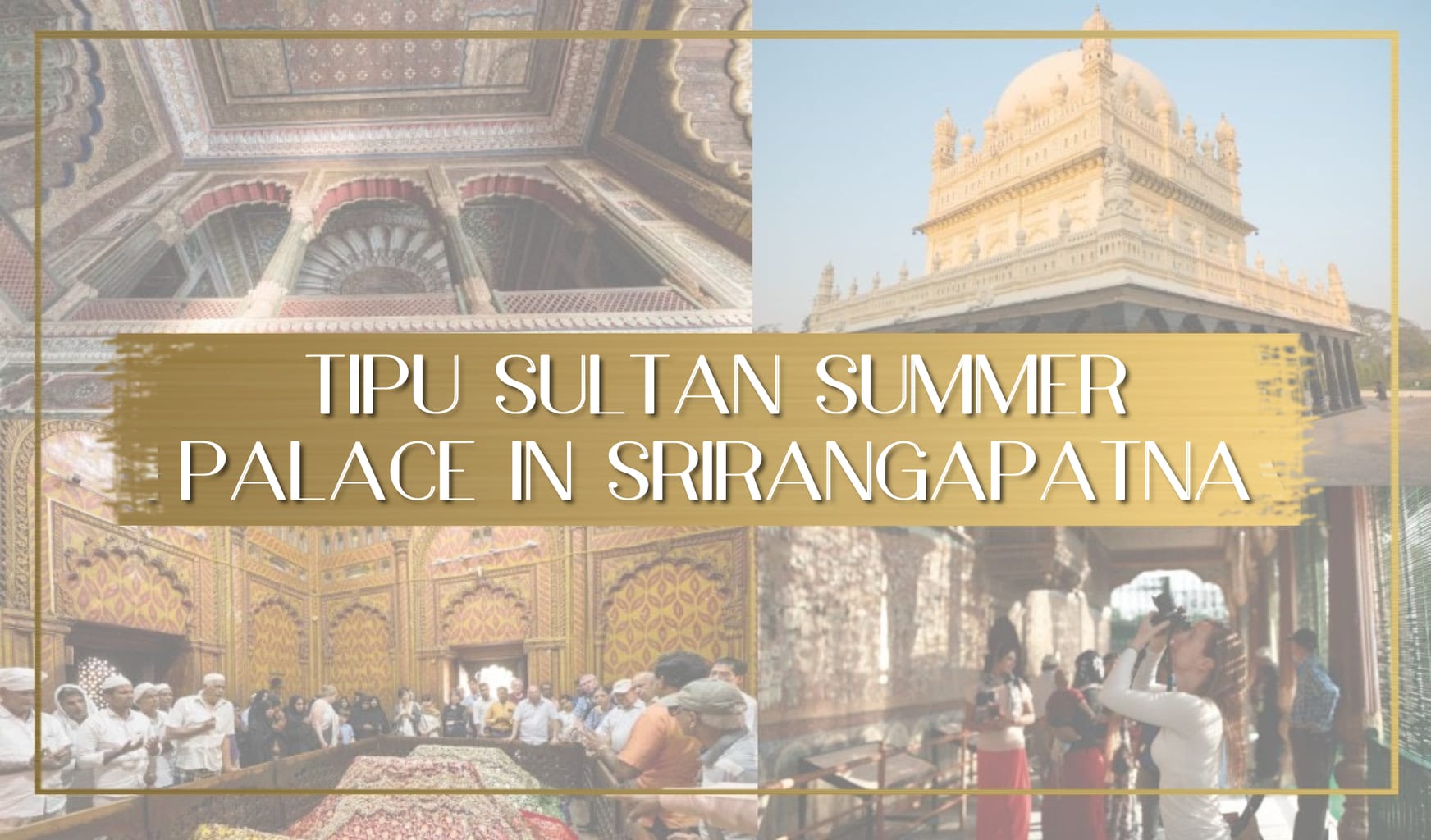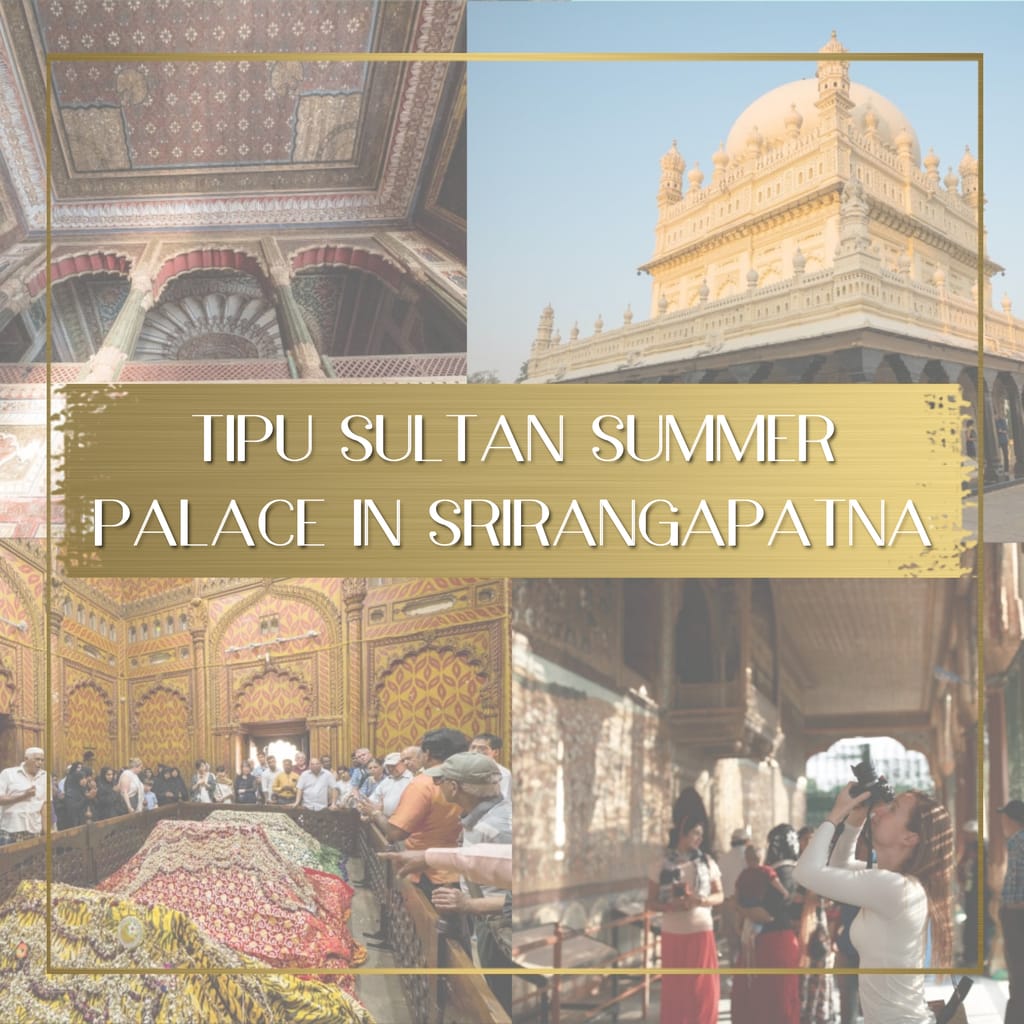
There is a lot of confusion between Tipu Sultan Summer Palace in Bangalore and Tipu Sultan Summer Palace in Mysore which is also referred to as Daria Daulat and is located in Srirangapatna.
In this article, I am going to talk about Tipu Sultan Museum which is inside the Daria Daulat complex or Tipu Sultan Summer Palace in Mysore. It also shouldn’t be confused with the actual Mysore Palace which is further south and in the city center.
See below the two palaces side by side for comparison.
If you look at the pictures, you will immediately know which one of the two I am referring to as the ones from Tipu Sultan Museum and Daria Daulta are absolutely breathtaking and not usually available elsewhere because we got special permission to take photographs granted by the Archaeological Survey of India management team who were with us during our visits as part of The Golden Chariot, a luxury train in India, across Karnataka.
The history of Srirangapatna
Srirangapatna is the name of a city that is located in an oval-shaped island about 20km from Mysore. It was the capital of Tipu Sultan’s empire and a center of power until the death of the Sultan in 1799 when the capital was moved to Mysore.
As a result, the area is filled with the remnants and historical vestiges of Tipu Sultan’s and his father Hyder Ali’s constructions. There is a fort, the mausoleum containing both their bodies, the site of Tipu Sultan’s rocket launch and the Museum which is one of the most delicately decorated and stunning monuments in India.
The name Srirangapatna comes from a Mahavishnu temple called Sri Ranganathaswamy and built by Tirumalaiah, a Ganga chieftain. Because of its strategic position, the temple was expanded by the many dynasties ruling the area, from the Hoysalas to the Mysore Wodeyars until Hyder Ali came to rule the area.
Daria Daulat, Tipu Sultan Summer Palace and Museum
The Daria Daulat Bagh refers to Tipu Sultan’s Summer Palace which contains Tipu Sultan’s Museum on its ground floor and feels like something out of a spectacular Bollywood movie.
Tipu Sultan’s Museum is an incredible example of Indo-Islamic architecture and it is reminiscent of the Summer Palace in Bangalore, one of the best things to see in the city, because it is also built entirely in teak wood.
The museum is rectangular and rests in an elevated platform. It is fully covered from the sun for protection so its delicate paintings are not damaged with time. The outer part of the building is made of open corridors with pillars and in the middle, there are a few rooms with exhibits showcasing sketches, coins, weapons (pistols, daggers, cannons, swords), clothing (including Tipu Sultan’s pyjamas) and oil paintings of famous characters of the time.
Although the building is two-storey, it is hard to find the hidden staircases that go up to the second floor and access is not allowed.
The outer walls of Tipu Sultan’s Museum depict scenes from battle and are fully covered by the most detailed paintings. Not an inch of the building is left unpainted.
Gumbaz, Tipu Sultan’s Mausoleum
Another relevant sight in Srirangapatna is Gumbaz, Tipu Sultan’s Mausoleum. When Hyder Ali died, Tipu Sultan built a marble mausoleum for him to be buried in. Upon his death at the hands of the forth battle with the British, they allowed him to be buried there together with his mother Fakr-Un-Nis and father and was given full military honors the day after his death in 1799. A few members of the family were buried in the gardens and their tombs have inscriptions in Farsi.
The mausoleum is of Persian design and made of solid white marble with a dome and black granite columns and it resembles the Taj Mahal. The structure is surrounded by a cypress garden with different species of trees and plants collected by Tipu Sultan and called Lal Bagh, Garden of Rubies.
Inside, the chamber containing the tombs is painted in tiger stripes so characteristic of Tipu Sultan, and the tombs are covered in the same striped blankets making for a colorful sight. Pilgrims and devotees still come every day to pay their respects.
Tipu Sultan’s Museum and Srirangapatna as a whole are some of the most interesting vestiges of a dynasty, that headed by Tipu Sultan and his father Hyder Ali, which was critical to the development of both Bangalore and Mysore so you should definitely make sure to include them in your visit of the area.
Remember to Pin this post to your #India Pinterest board
